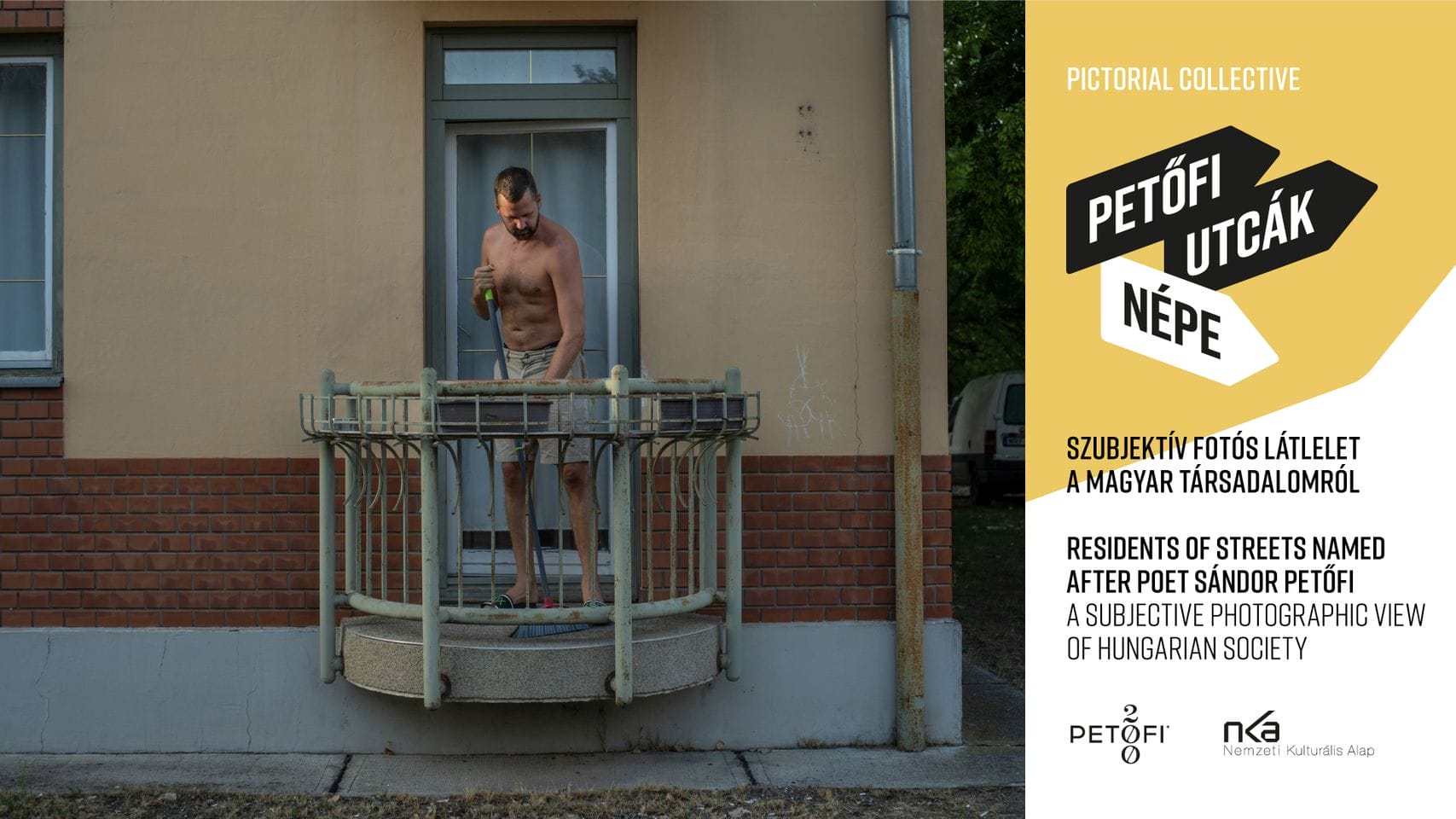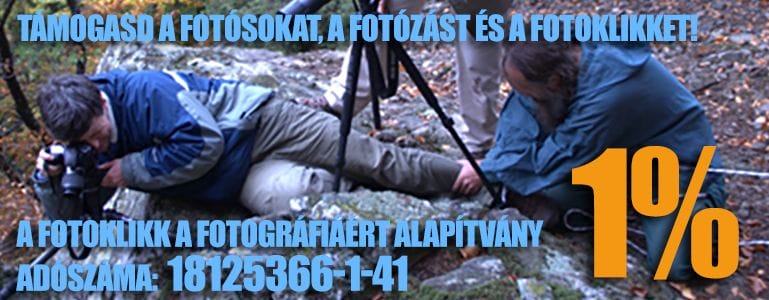
- This event has passed.
Pictorial Collective: Petőfi utcák népe – Szubjektív fotós látlelet a magyar társadalomról
2023, June 22 - 2023, October 1

***Please scroll down for the English version***
A Robert Capa Kortárs Fotográfiai Központ tisztelettel meghívja önt és kedves barátait következő kiállításának megnyitójára:
Pictorial Collective: Petőfi utcák népe – Szubjektív fotós látlelet a magyar társadalomról
2023. június 21., 18 óra
A kiállítást megnyitja: Szálinger Balázs, József Attila-díjas költő
Kiállító fotográfusok : Bácsi Róbert László, Bődey János, Hirling Bálint, Mohai Balázs, Móricz-Sabján Simon †, Pályi Zsófia, Stiller Ákos, Urbán Ádám és Végh László, a Pictorial Collective tagjai
Együttműködő partnerek: Nemzeti Kulturális Alap, Petőfi 200 Ideiglenes Kollégium
A születése óta eltelt két évszázadban divat volt azon töprengeni, mit gondolna ma Petőfi. Mi inkább arra voltunk kíváncsiak, hogy ha most indulna vándorútjára, vajon mit látna: Hogyan élnek ma a magyarok?
Petőfiről nevezték el a legtöbb utcát Magyarországon, ha egymás mellé tennénk mind a 2800-at, az Atlanti-óceánig is eljuthatnánk. A Pictorial Collective dokumentarista fotós kollektíva kilenc tagja a Petőfi utcák 266 ezer lakóját fotózta az elmúlt másfél évben. A képeiken kirajzolódó, határon túlra is átnyúló képzeletbeli Petőfi utca a mai magyar társadalomról ad szubjektív látleletet.
Petőfi Sándor kultusza már a 19. században nagyra nőtt, az pedig szinte burleszkbe illő, ahogy az elmúlt kétszáz évben minden politikai rendszer magához próbálta hajlítani az aktualizált Petőfi-képet. A gyorsan nemzeti vátesszé emelt Petőfi iránt senki nem maradhatott közömbös, így az összes rezsim róla nevezett el rengeteg keze ügyébe kerülő művelődési házat, könyvtárat, laktanyát és utcát. A több hullámban futó közterület-átnevezési kampányok pedig elkerülték Petőfit, akiről például a keményvonalas sztálinista Rákosi-diktatúrában is tonnaszámra nevezték át az addig Habsburgokról elnevezett magyarországi utcákat. Persze nem a települések legfontosabb közterületeit, hiszen azokat a kommunizmushoz közvetlenül köthető embereknek és jelszavaknak tartogatták, ezért fotósaink is inkább a falvak és városok mellékutcáiban kutakodtak.
Az elmúlt két évszázadban rengeteget mozdult előre a világ és benne Magyarország is. Többet fejlődtünk a reformkor óta, mint az államalapítás óta addig eltelt 800 évben összesen. Persze volt honnan, Petőfi korában a társadalom nagy része még írástudatlan zsellérekből állt. A Pictorial Collective mai fényképeit elnézve azért mégis erősen kétséges, hogy „a bőség kosarából mindenki egyaránt vehet”-e már, és Petőfi valószínűleg nem gondolná ma sem, hogy „megálljunk, mert itt van már a Kánaán”.[1]
A képeken nem a mélyszegénység és a nyomor a szembeötlő, mert nem is ezzel találkoztak leggyakrabban a fotósok országjárásuk során, hanem a szürkeséget szépítgető népi barkácsesztétikával, ami gyakran a létbizonytalanságot hivatott elfedni. Pedig környezetünk folyamatosan visszahat ránk. De vajon a név tényleg kötelez és működik a genius loci, a hely szelleme? Fontos, hogy kiről nevezzük el az utcáinkat? Hatással van Petőfi szellemisége egy Petőfiről elnevezett általános iskola tanulóira?
Petőfi verseiben közérthetően fogalmazott, ahogy a dokumentarista fotográfiák elsődleges jelentése is könnyen dekódolható. De a versekből és a fényképekből is, pláne a teljes fotóanyagból sokkal több kiolvasható: az egész több, mint a részek összessége. Ha újabb kétszáz év múlva visszanéznek utódaink, mit látnak majd? Végképp elnéptelenedett falvakat, vagy inkább további rohamos fejlődést?
Idővel minden fénykép érdekessé nemesül. Próbáljunk meg ezekre a jelenünket ábrázoló fotókra is inkább egy képzeletbeli jövő perspektívájából rátekinteni, tanulságos tapasztalás lehet, különösen Petőfi sorait fejben tartva:
Mögöttem a múlt szép kék erdősége,
Előttem a jövő szép zöld vetése;
Az mindig messze, és mégsem hagy el,
Ezt el nem érem, bár mindig közel.
Ekkép vándorlok az országuton,
Mely puszta, vadon,
Vándorlok csüggedetten
Az örökkétartó jelenben.[2]
Virágvölgyi István
kurátor
[1] Petőfi Sándor: A XIX. század költői (részletek), Pest, 1847. január
[2] Petőfi Sándor: Mögöttem a múlt…, Szalkszentmárton, 1846. március 10. előtt
A kiállítás megtekinthető:
2023. június 22. – október 1.
Kedd–péntek: 13–18 óra • Szombat–vasárnap: 10–18 óra
Hétfőn és ünnepnapokon zárva.
//
The Robert Capa Contemporary Photography Center cordially invites you and your friends to the opening of its upcoming exhibition:
Pictorial Collective: Residents of streets named after poet Sándor Petőfi – A subjective photographic view of Hungarian society
June 21, 2023, 6pm
Opening remarks by: Balázs Szálinger, József Attila Prize-winning poet
Exhibiting photographers: Bácsi Róbert László, Bődey János, Hirling Bálint, Mohai Balázs, Móricz-Sabján Simon †, Pályi Zsófia, Stiller Ákos, Urbán Ádám és Végh László, members of Pictorial Collective
Collaborating partners: National Cultural Fund, Petőfi 200 Temporary College (Nemzeti Kulturális Alap, Petőfi 200 Ideiglenes Kollégium)
In the two centuries since his birth, it has been fashionable to wonder what national hero and 19th century poet Petőfi would think today. We were more curious to know what he would see if he were to set off on his cross-country journey now: how do Hungarians live today?
In Hungary, most streets are named after Petőfi, and if we put all 2800 of them together, we could go as far as the Atlantic Ocean. Nine members of the Pictorial Collective documentary photography collective have photographed the 266,000 residents living in the Petőfi Streets over the past year and a half. The imaginary Petőfi Street being outlined in their pictures, which extends beyond the borders of Hungary, provides a subjective view of contemporary Hungarian society.
The cult of Sándor Petőfi grew enormously already in the 19th century, and it is almost burlesque how every political system in the last two hundred years has tried to appropriate the actualized image of Petőfi. No one could remain indifferent to Petőfi, who quickly became a national vates, so all the regimes named many cultural buildings, libraries, barracks, and streets after him. The public space renaming campaigns, which ran in several waves, avoided Petőfi, after whom, for example, in the hardline Stalinist Rákosi dictatorship of the 1950s, many streets were named that had until then borne the names of the Habsburg monarchs. Not the most important public spaces in the towns and villages, as these were reserved for people and slogans directly linked to communism, so our photographers explored the by-streets of villages and towns.
In the last two centuries the world, including Hungary, has moved forward a lot. We have developed more since the Mid-19th century Hungarian Reform Era than in the 800 years since the founding of the Hungarian state up to that date. There was of course room for improvement, as in Petőfi’s time most of society was still made up of the illiterate peasantry. But looking at the Pictorial Collective’s photographs today, it is highly doubtful that “all men” can “lift the horn of plenty in one happy equality” and Petőfi would probably not suggest today either that “no more wandering, Canaan is here, let us rejoice!” [1]
What is striking in the pictures is not the abject poverty and misery, because that is not what the photographers encountered most often during their travels, but the folk do-it-yourself aesthetics that embellish the grey, often to mask the insecurity of livelihood. And yet our environment affects us constantly. But is the name really binding and does the genius loci, the spirit of the place, work? Is it important who are our streets named after? Does Petőfi’s spirit have an impact on the pupils of a primary school named after him?
Petőfi was clear to all in his poems, just as the primary meaning of documentary photography is easy to decode. But there is much more to be retrieved from the poems and the photographs, especially the entire photographic material: the whole is more than the sum of its parts. In another two hundred years, when our descendants look back, what will they see? Depopulated villages or more rapid further development?
Over time, every photo becomes more interesting. Let us also try to look at these photos of our present from the perspective of an imaginary future, it can be an illuminating experience, especially if you keep Petőfi’s lines in mind:
Blue woodlands of the past, they spread behind,
In front are future’s sowings, green, aligned.
One’s far, yet will our bond not sever,
The other’s out of reach for ever.
Like this I wander ways and press
On in the barren wilderness,
And crest-fallen, roam the bare
Present, which is forever there.[2]
István Virágvölgyi
Curator
[1] Sándor Petőfi: The Poets of the Nineteenth Century (Excerpts), Pest, January 1847 (translation: Edwin Morgan)
[2] Sándor: Petőfi: Blue woodlands of the past, Szalkszentmárton, before 10 March 1846 (translation: Leslie A. Kery)
June 22 – October 1, 2023
Tuesday–Friday: 1pm–6pm • Saturday–Sunday: 10am–6pm
Closed on Monday and on public holidays.
https://www.facebook.com/events/100638743074862/



